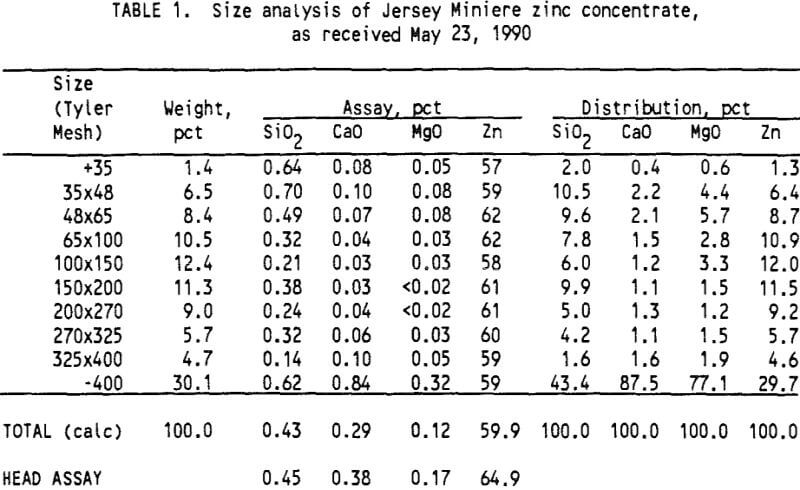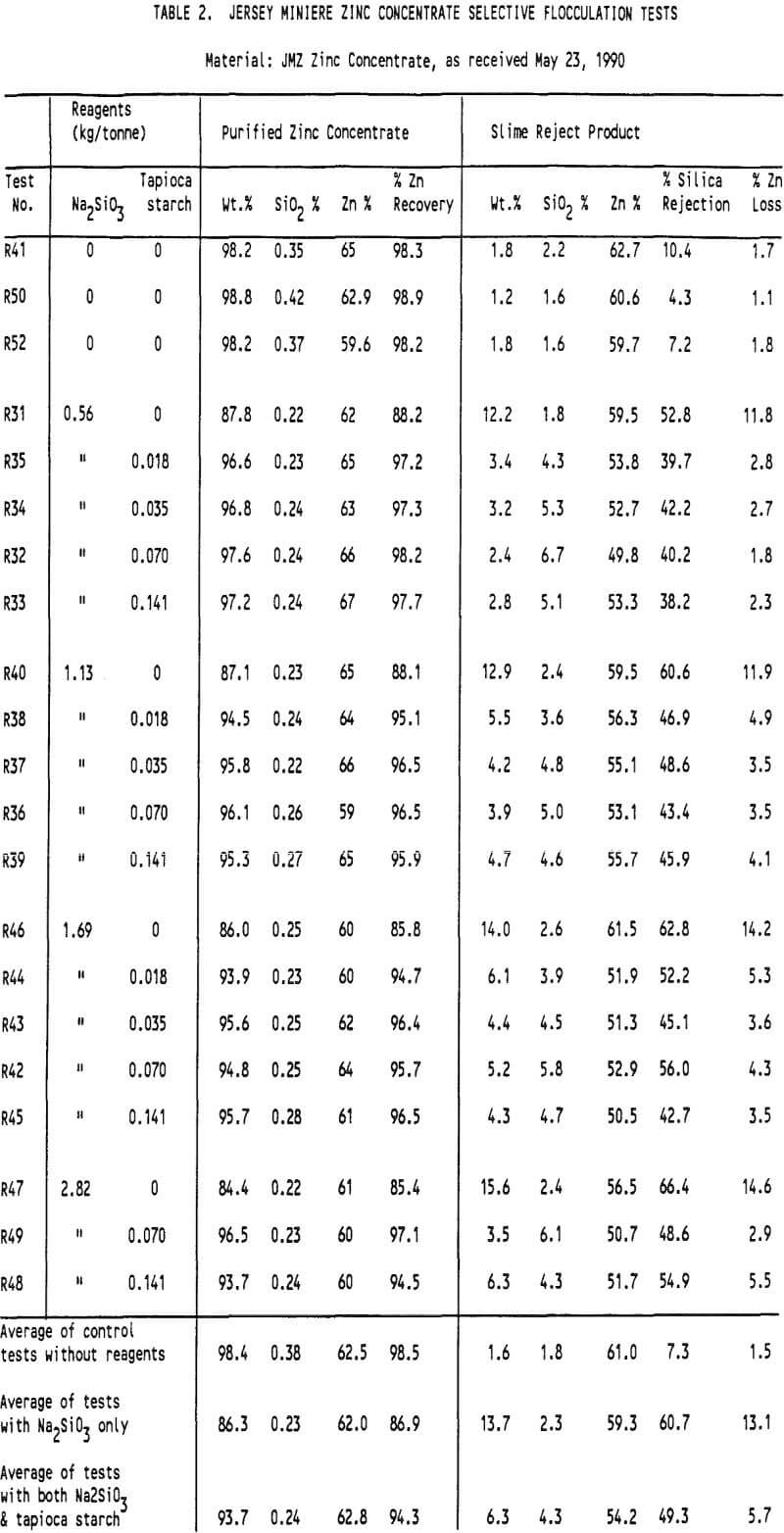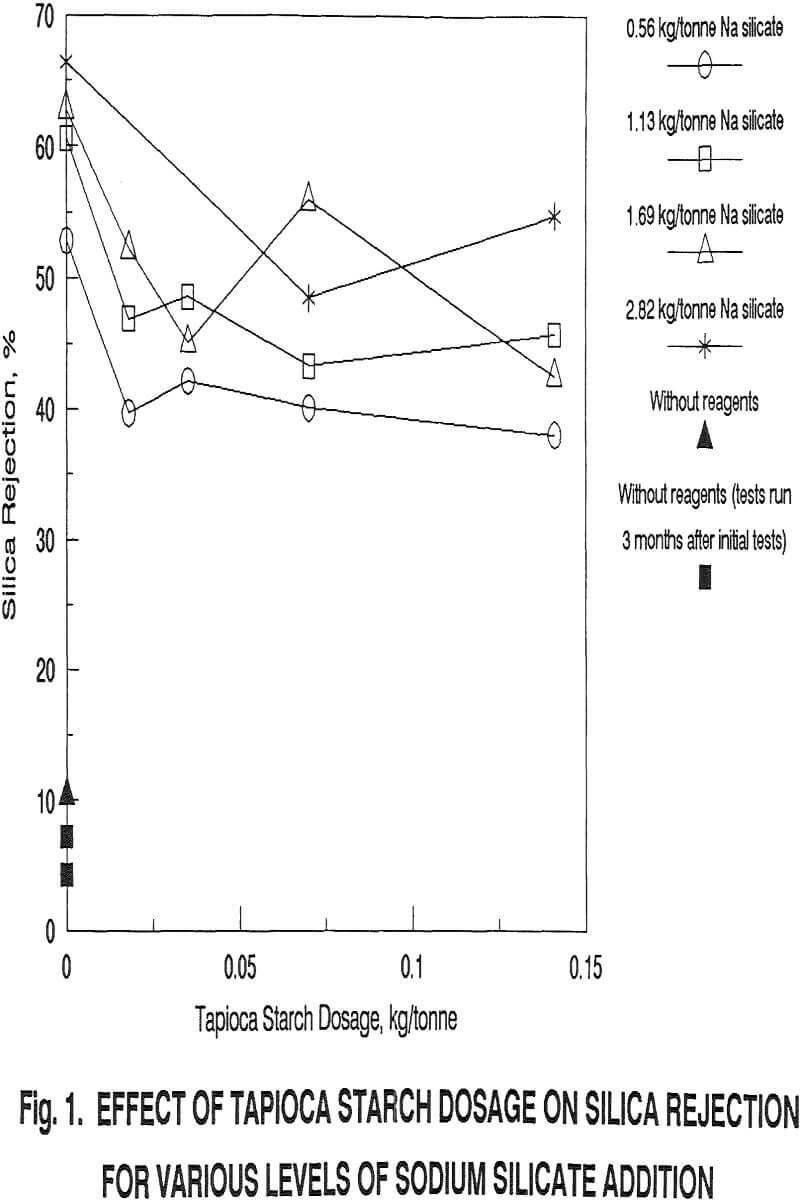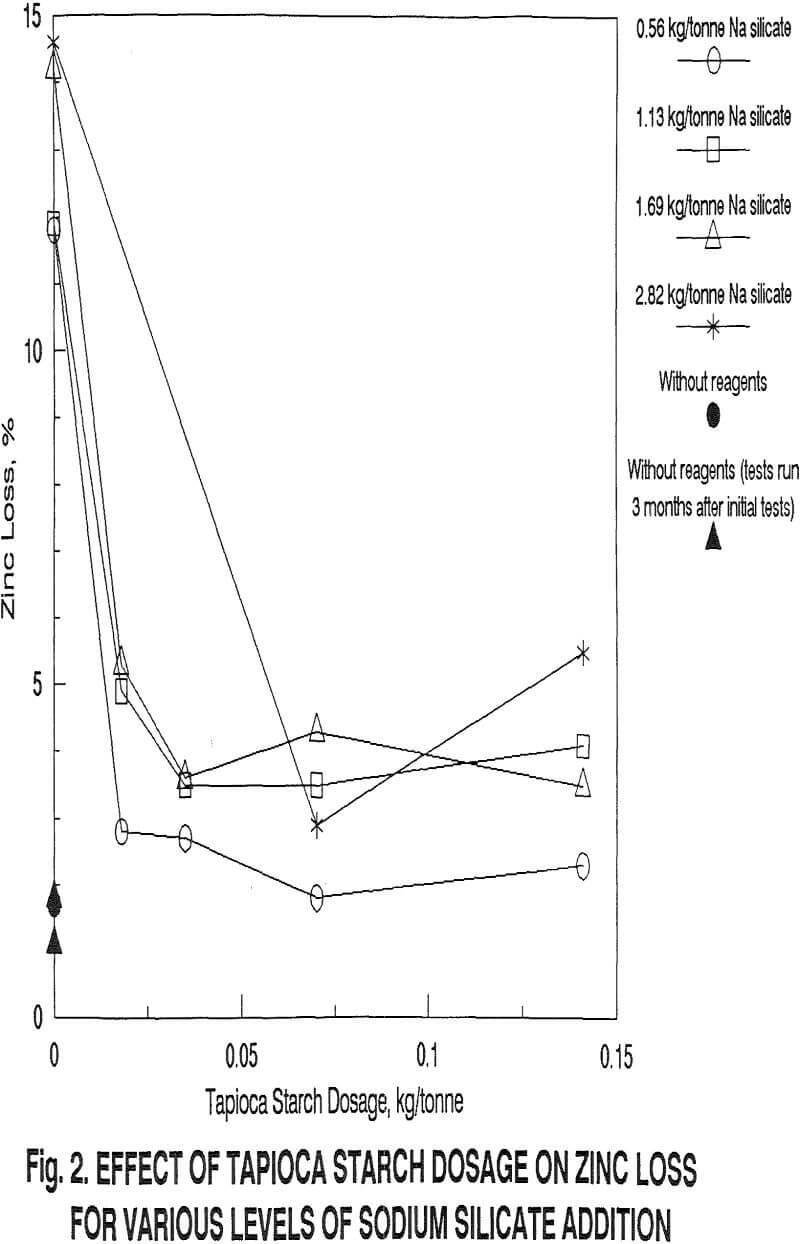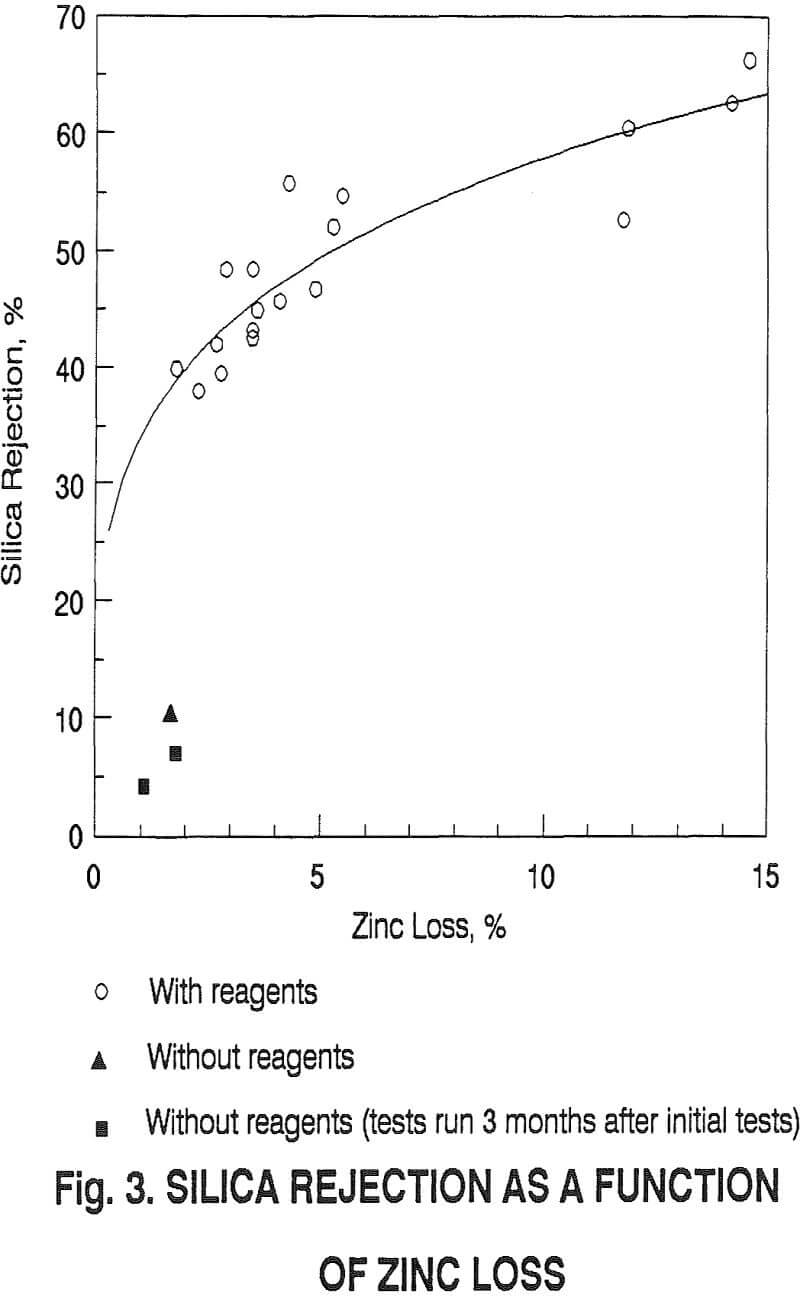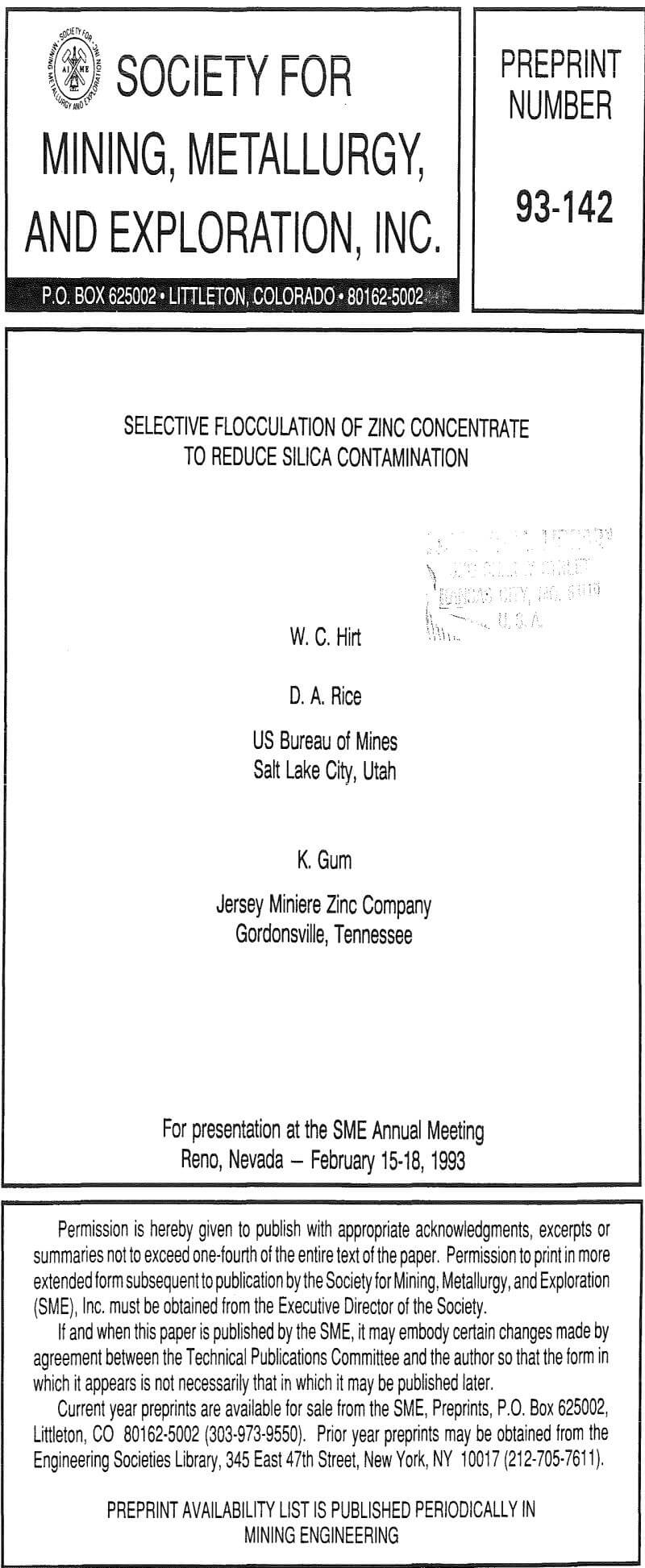Selective flocculation was used to produce superclean zinc concentrate with minimized silica contamination. Research was carried out on a flotation concentrate from the Jersey Miniere Zinc Company (JMZ) in Gordonsville, Tennessee. The material was first dispersed with sodium silicate and then causticized tapioca starch was used to selectively flocculate the sphalerite, leaving the silica in suspension. This technique has been applied commercially to iron ore beneficiation but has never been used for processing zinc. The feed material assayed 0.45% SiO2. Use of 0.56 kg/tonne (1.13 lb/st) of sodium silicate and 0.070 kg/tonne (0.141 lb/st) of causticized tapioca starch resulted in 98.2% zinc recovery in a purified zinc concentrate assaying 66.0% Zn and 0.24% silica. The present target level for silica contamination in JMZ zinc concentrates is 0.3% SiO2. This work has shown that selective flocculation offers a potential method for cleaning flotation concentrates, particularly where low silica products are required.
Experimental Equipment and Materials
Two samples of zinc concentrate from the Jersey Miniere Zinc Company concentrator, Gordonsville, Tenn.
The first sample was taken during experimental work carried out by Salt Lake City Research Center personnel in the JMZ mill during 1989; it was a cleaner concentrate from a mobile column flotation machine taken July 23, 1989. The sample was filtered in our laboratory before use in the flocculation tests; moisture content was 11%.
The second sample was taken by JMZ personnel. It was a cleaner concentrate sample and was received as a slurry at the Salt Lake City Research Center on 23 May 1990. Before use in the present testwork, it was filtered to a moisture content of 11% and then blended moist. On a dry basis, the material assayed 0.45% SiO2, 0.38% CaO, 0.17% MgO, and 64.9% Zn. This second sample was used to generate all data reported herein. Size and chemical analysis of the concentrate showed that the minus 38-µm (minus 400-mesh) fraction contains the bulk of the silica (43.3%) and 29.7% of the zinc. Most of the possible physical beneficiation methods which could be used to remove the silica contaminant are precluded because of the extreme fineness of the material.
Denver laboratory flotation machine model D-1 with a 3.4 L capacity plastic cell.
Brand N sodium silicate (SiO2/Na2O – 3.22/1) from the Philadelphia Quartz Co.
Tapioca starch flour from the Chicago Dietetic Supply House, Inc. The starch was causticized before use.
Results and Discussion
Exploratory tests performed during December 1989 and January 1990 on the first sample (taken in July 1989) were promising. Based on these results, more tests were performed on this same sample during July 1990. However, the initial tests could not be duplicated; results from the tests performed in July 1990 were very different from those performed earlier. The differences may have been caused by aging due to chemical reactions occurring on the mineral particle surfaces. It was decided to obtain a fresh sample for further testwork.
The second round of tests (the subject of this report) was carried out in July 1990 on the sample received in May 1990. The test without added reagents (test R41) was duplicated in October 1990 (tests R 50, 52) without any apparent aging effect, since repeatability was good.
Tests in which sodium silicate was added without tapioca starch (tests R31, R40, R46, R47) achieved fairly uniform results. The silica was well dispersed; average silica rejection was 60.7%. The amount of silica in the zinc concentrate was reduced to below the target level (average 0.23% silica). However, because some sphalerite was also dispersed by the sodium silicate, zinc losses were unacceptably high (average 13.1%). A substantial amount of the feed reported to the slime reject product (average 13.7 weight percent).
Use of tapioca starch with the sodium silicate was also effective in reducing the silica contamination in the zinc concentrate. The amount of silica was reduced below the target level (0.3% SiO2) in every test which used both reagents; the purified zinc product averaged 0.24% SiO2 (cf. average of 0.23% SiO2 with sodium silicate alone), representing an average silica rejection of 49.3%. The advantage of using both reagents vs. sodium silicate alone is that the added tapioca starch decreased the amount of zinc lost; this was accomplished by selectively flocculating the zinc, bringing more of it down into the settled purified zinc product, while leaving the silica relatively undisturbed and dispersed in the supernatant liquid.
Because it contains significant zinc values, the slime reject product would have to be returned to the flotation circuit at a point yet to be determined. Further testwork would have to be carried out to determine the effect of the added sodium silicate and tapioca starch on subsequent zinc flotation.
The company has no immediate plans to implement the selective flocculation scheme in the concentrator because of other corporate priorities, but may do so at some future date.
